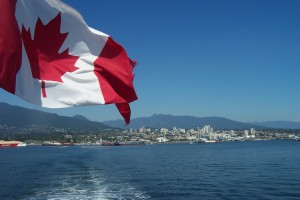 Population of Canada 2016
Population of Canada 2016
Based on the total number of births, total number of deaths, net migration rate, and the population of 2015, the population of Canada for 2016 is estimated at 35,344,962, which makes up about 0.49% of the world’s total population. Canada’s population is ranked 37th largest, behind Uganda, but ahead of Iraq.
About 80% of the population lives within 150 kilometers or 93 miles of the United States border. The main areas of concentration are Quebec City-Windsor Corridor, British Columbia Lower Mainland, and Calgary-Edmonton Corridor in Alberta. The aboriginal population is growing at a rate almost double the rate that the national Canadian population is growing. The country also has one of the highest per-capita immigration rates in the world and accepts a large number of refugees from various countries throughout the world.
Government of Canada 2016
The Constitution Act of 1867 established the Canadian government as a federal constitutional monarchy. The government consists of a federal, legislative, and judicial branch and the Canadian Crown is the foundation of all three branches. Canada is part of the Commonwealth of Nations, which means that the Crown of Canada is also the Crown of England. Thus, the Crown of Canada is Queen Elizabeth II. Her role is mainly legal and practical instead of a political role. The Queen then appoints the Governor General of Canada, currently David Lloyd Johnston. The Governor General will then appoint the Prime Minister. Typically, the Governor General must pick the person that he or she knows can garner support and confidence from the House of Commons (thus, usually a member of the majority party). Currently, the Prime Minister of Canada is Stephen Harper, a member of the Conservative Party. The prime minister serves as the head of government and leads the Cabinet. The legislative branch consists of the Queen (under the representation of the governor general), the Senate, and the House of Commons. The Governor General will appoint all 105 members of the Senate, while the people elect the 305 members of the House of Commons. The legislative branch is responsible for passing laws and creating legislation. The governor general calls the parliament into session in the Queen’s name. The judicial branch is also performed under the Queen’s name and power. The Supreme Court of Canada is considered to be the court of last resort. The Supreme Court consists of the Chief Justice and eight other justices. The Governor General appoints the Chief Justice under the recommendation of the Prime Minister. The current Chief Justice is Beverley McLachlin. Under the Supreme Court is Federal Court, which works together with the Federal Court of Appeals and the Tax Court of Canada. Lastly, because of the presence of federalism, the legislative abilities are split between the federal and provincial governments.
 Economy of Canada 2016
Economy of Canada 2016
Canada is considered to be one of the most developed countries in the world. Its economy is considered to be the world’s eleventh largest with a nominal Gross Domestic Product of $1.82 trillion. Toronto’s stock exchange is the seventh largest stock exchange in the world with about 1,577 companies involved in the exchange. As of February 2016, the unemployment rate is 7.0% of the working force population. The province/territory with the highest unemployment rate is Nunavut with an employment rate of 14.6% and the one with the lowest unemployment rate is Saskatchewan with a rate of 3.9%. Only five provinces/territories have unemployment rates lower than the national average. The Consumer Prince Index annual inflation in February was 1.1%. Lastly, as of December 2015, the monthly GDP growth was -0.5%.
Education in Canada 2016
The education system is controlled by each individual province and territory, instead of the national government. The literacy rate is 99% for both males and females. Overall, about 90% of Canadians have a high school degree and about 14% have a college degree. The nation as a whole spends around 5.2% of its Gross Domestic Product on education. Recently, the Canadian government has worked on an initiative that allows foreigners that studied and graduated in Canada to become permanent residents of Canada. Typically, students begin school in Kindergarten around age 5 or grade one around 6 and continue until grade twelve around age 17 or 18. However, Quebec includes one less year than the other provinces. Lastly, there are various religious and linguistic options for schools, including Protestant school systems and French school systems.
Health and Health Care in Canada 2016
The Canada Health Act of 1984 established the publicly funded health care system in Canada. As a result, Canada has a single-payer system, meaning that the government is the main single-payer of health care. If someone enrolls in the public health care system, he or she receives a health care issued by the Provincial Ministry of Health and receives the same quality and level of care as everyone else in the system. While the public system is available, about 28% of Canadians take part in the private sector of health care. Most times, Canadians purchase private health care for the purposes of the parts of health care that the system does not cover, such as prescription drugs and dentistry. Some criticisms of the public health care is the length of wait times for health care, restrictions on private care, and the number of people that cross borders to receive health care.
Life expectancy in Canada is the second highest among the G8 countries at 81.3 years on average. However, Canada has the second highest infant mortality rates among the G8 countries at 4.5 infant deaths per 1,000 births. In 2008, about 24.6% of the male population and 23.9% of the female population over the age of 20 were considered obese. 24% of the male population and 17% of the female population over the age of 15 use tobacco. Canada has the second lowest ratio of physicians and nurses per 1,000 people. There are only 2.2 physicians for every 1,000 Canadians. Thus, there are an estimated 77,759 physicians throughout Canada. There are also only 9.0 nurses per 1,000 people and thus about 318,105 nurses throughout Canada. Behind the United States, Canada has the second highest per capita expenditure on health care, spending about $3,895 per capita on health. However, the per capita rate in Canada is almost half the per capita rate in the United States. Canada spends 10.1% of its Gross Domestic Product on health care, compared to the United States spending 16% of its Gross Domestic Product. They also spend 16.7% of tax revenue on health care, compared to the United States spending 18.5% of revenues on health care. But, Canada pays for 69.8% of health costs, while the United States only pays for 45.4% of health costs.
Canada’s Geographic Challenge
Other Resources


